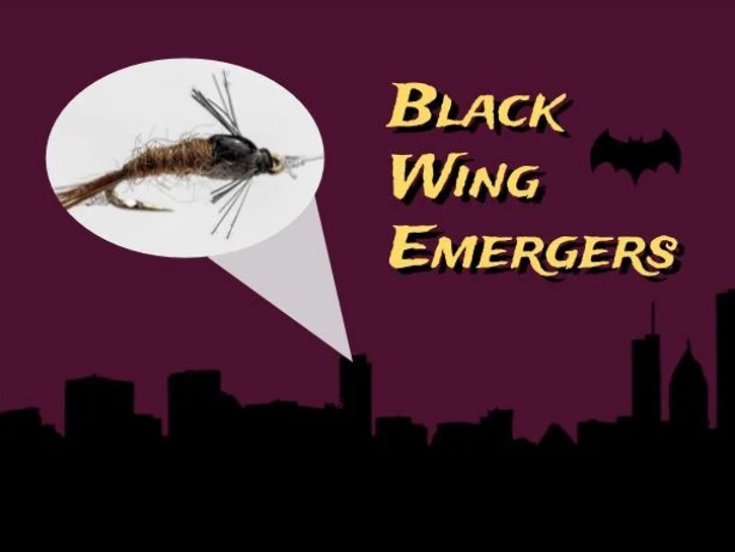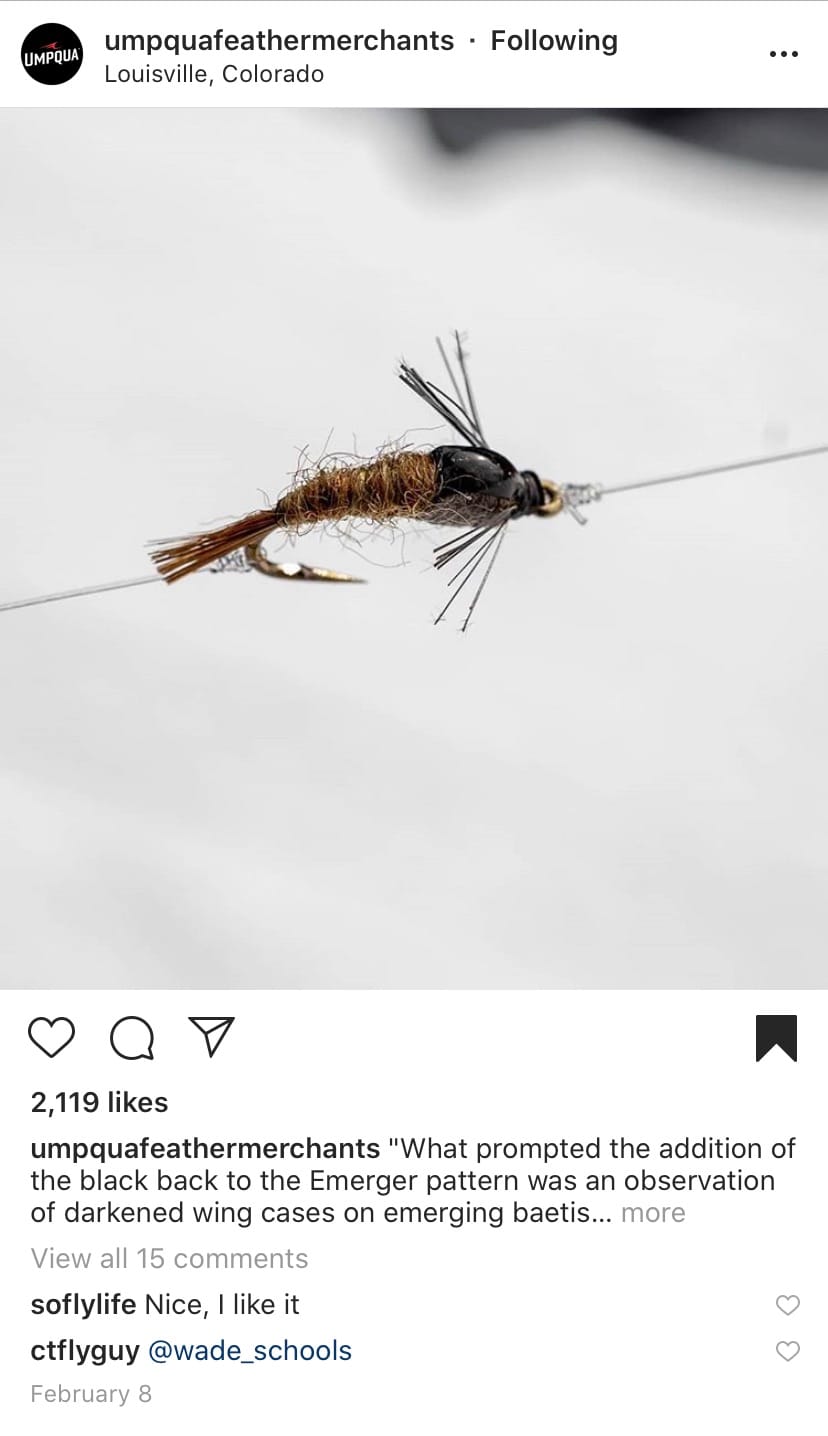Black-wing Emergers
Fly Tying: Discussing a nondescript pattern listed in Umpqua’s catalog often past over piles and piles of peridgons.

October 2019
No, I’m not talking about Batman’s latest contraption, though a Wayne Enterprise-designed fly pattern might be pretty badass. I’m talking about a forgotten little pattern that briefly appeared in Umpqua’s catalog before getting lost behind the piles and piles of perdigons, and euro nymphs.
As with anything fly tying related, it’s probably been around for quite some time somewhere, but I really noticed it when Umpqua featured a John Barr fly called the Black Back Emerger this February (2019). The core concept was pretty simple. John noticed that mayfly emergers often exhibited darkened wing pads.

An acute observation, but surprisingly absent in many popular mayfly emerger patterns. You’ll frequently see sparkle wings, or flashbacks, white foam posts, or even cdc, but rarely black wingbuds. Yet scientists have long been using this simple fact, highlighted by John’s quote, to identify mature mayfly nymphs. In The Mayfly Subimago, authors note that dark wingpads and opaque eyes are key features distinguishing the final nymphal stage. This trait also applies to stoneflies, another macroinvertebrate exhibiting incomplete metamorphosis. Scientists have deduced flight periods (hatches) from directly observing either adults or mature nymphs with black wing pads.
So why don’t we see more spin-offs of this style of pattern? Well it's not popular right now to match the hatch, you just need to force-feed trout squirmy wormies. More seriously, a natural, dark-winged emerger isn’t flashy in fly bins and undoubtedly will get passed up for flashback counterparts. PSA: buy/tie flies for fish, not for you. Interestingly, the black wing emerger no longer exists in the Umpqua catalog, though it has been re-purposed as a Trico emerger. Many existing patterns could be appropriate to take its place though, but the key is a pattern that shows the contrast between the body and the dark budding wings.
In previous posts, I discussed the importance of matching a feeding trout’s search image, especially when trout turn picky. Fish that ignore your flies during a thick hatch can be incredibly frustrating, so hijacking biological knowledge might just be the key to turning that frustration into a day-saver, it’s what Batman would do!
Sources:
- Edmunds Jr., G. F., McCafferty, W. P. 1988. The Mayfly Subimago. The Annual Review of Entomology.
- Campbell, I. E. Editor. 1987. Mayflies and Stoneflies: Life Histories and Biology. Proceedings of the 5th International Ephemeroptera Conference and the 9th International Plecoptera Conference.

